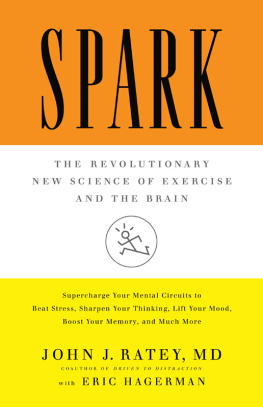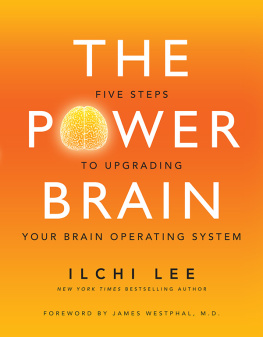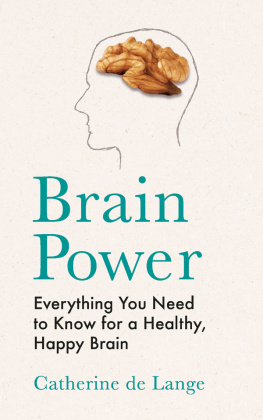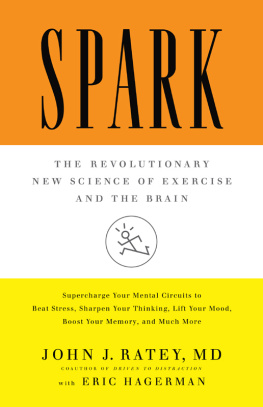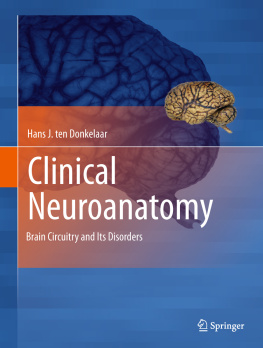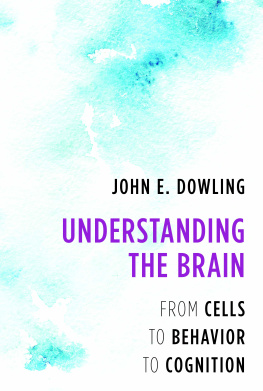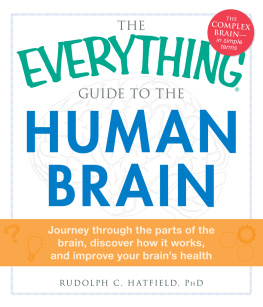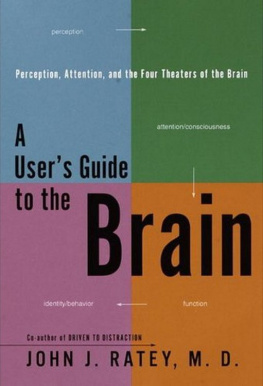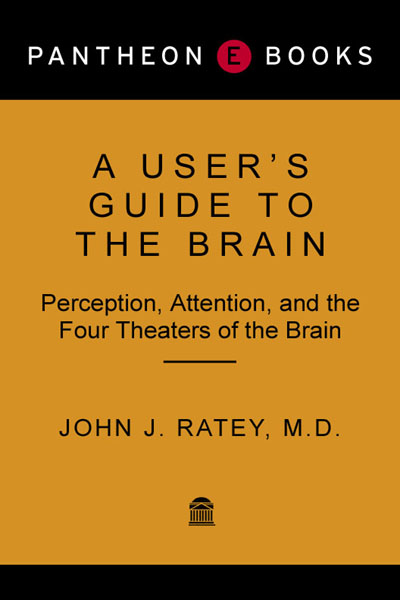
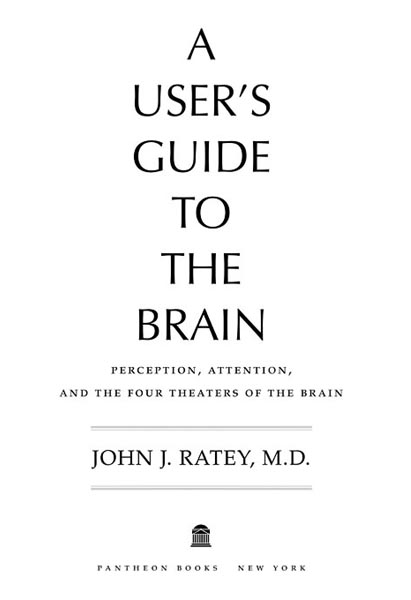
FOR TEMPLE GRANDIN AND MY WIFE, NANCY.
TWO BRAINS WHO HAVE TAUGHT ME MUCH.
CONTENTS
INTRODUCTION
FOR THE FIRST TIME EVER , discoveries in the neurosciences are beginning to overlap with fields as different as anthropology, philosophy, linguistics, and psychology. The media seem obsessed with one particular aspect of these discoveries, namely, that there is a biological basis for our personalities, behaviors, and mental disorders. This is exciting stuff, of course, but it misses the real thrill of what we are beginning to uncover.
Along with better drugs, our new discoveries are beginning to generate speculative theories about how the brain itself works. If several of these theories are even remotely close to the truth, they will change the way we think about ourselves forever. An observer of the developing scene must feel as Balboa must have when he first saw the Pacific Ocean: we dont yet know the full meaning of what we are seeing in the neurosciences, but we do know it means the beginning of a new age. To see yourself through the eyes of the modern neuroscientist, it turns out, not only provides a means of self-understanding that is new and inspiring but also points to a unification, rather than a contradiction, of what psychologists, anthropologists, linguists, and philosophers have been saying all along. Suddenly, for us, the world has gone from flat to round! Because the brain is ultimately responsible for personality, culture, language, and reason, this emerging unity is hardly surprising, but it is breathtakingly new, for only recently has research allowed us to speculate on how the brain actually works.
How, then, are we to set about translating such a complex topic into a useful primer for everyone? At first glance, the neuroscientific mapping of the brain is a confusing hodgepodge of different classification systems. Because individual brains vary so significantly, even professional neurogeographers often disagree as to where the lines should be drawn, and function is an entirely different matter. Imagine trying to read a road map of Pennsylvania that had, in tiny print, all of the combined data from voting belts, income concentrations, population density, ethnic composition, and geologic surveys, and all of it recording historical changes over the last century. It would be so much easier, you sigh, to call the tourist office and get specific directions, but then you would miss out on the rich culture the state has to offer. Brain science is its own priestly sect, a mystical order quite closed off to the uninitiated. I will be working my hardest throughout this book to give to you, the reader, a chance to learn about the brains complexity without jargon. I hope you begin to get excited as you realize that what we now confront in the neurosciences is more enthralling than the computer or cyberspace in all its glory. Discoveries in the next thirty years will transform not merely our world but our very selves. How and when these changes in our world will occur is, of course, unpredictable, but we all need to be ready and very much a part of what is coming.
The confusing terminology that neuroscience applies to the brain and its functions will itself eventually need to changeand it will as our understanding of the brain deepens. Scientists looking at pathology are still caught up in the unitary hunt for the broken neural component they imagine to be at fault, and are doing their best to match up specific brain functions with specific neurogeographical locations. The sooner we replace our mechanistic model of the brain with an ecologically centered, systems-based view, the better off we will be, for such a model better accounts for much of human experience. But changing the terminology is not the purpose of the book; that really is work for neuroscientists, and work they must, for their own prejudices and categories are a big barrier to progress in the field. Terms like memory or happiness or plausibility are not brain functions, they are semantic categories generated by brain functions for which we have no names and of which, as yet, we have a poor understanding. Fortunately, most scientists in the field are aware of how urgent it is that we revise our models of how the brain works and find a corresponding new language to express those ideas. In these pages I will have to translate the jargon into some better form, and so I will, in a sense, be finding a new way to talk about the brain.
Much of the language used in discussing the brain, particularly in the cognitive sciences, comes from computation, and it is inconsistent with what we know about the brain. The brain is nothing like the personal computers it has designed, for it does not process information and construct images by manipulating strings of digits such as ones and zeros. Instead, the brain is largely composed of maps, arrays of neurons that apparently represent entire objects of perception or cognition, or at least entire sensory or cognitive qualities of those objects, such as color, texture, credibility, or speed. Most cognitive functions involve the interaction of maps from many different part of the brain at once; it is the bane of cognitive scientists that bananas are not located in a single structure of the brain. The brain assembles perceptions by the simultaneous interaction of whole concepts, whole images. Rather than using the predicative logic of a microchip, the brain is an analog processor, meaning, essentially, that it works by analogy and metaphor. It relates whole concepts to one another and looks for similarities, differences, or relationships between them. It does not assemble thoughts and feelings from bits of data.
Consequently, I have decided that I will have to replace much of the technical language about the brain with a language more akin to what the brain itself uses. Throughout this book I will be making constant use of metaphors and analogies, as well as anecdotes from my life and from those of patients. I do not include a glossary on purpose, as I try to use clarity and repetition to solidify in the readers memory the names, functions, and approximate locations of the many suborgans or parts of the brain. Although metaphor and analogy are unconventional in scientific circles, I am firmly convinced that a more nonlinear kind of thought will eventually supplant much of the logical reasoning we use today. Chris Langton, one of the primary researchers in the field of complexity theory, has speculated that in the future science will become more poetic. Our troubled world, too, is becoming too complex for logical argumentation, and may have to change its thinking: real trust, when emotions are running high, is based on analogy, not calculation. Meanwhile, we must concentrate our attention on learning all we can about the brain, as a way to get the jump on where the field, and our world, are headed.
Ever since Freud invented the technique of psychoanalysis, the human psyche has been regarded as an object of such complexity that only those few individuals trained to interpret the hieroglyphic communications of dreams have been deemed fit to delve into its depths. The mental health profession has always been shrouded in mystery, as if its members belonged to a secret priestly sect. These days, of course, science is beginning to replace several aspects of the Freudian model with biological explanations. While psychotherapy is still an essential part of treating mental disorders such as depression and anxiety, we know much more than we used to about how the brain may assist or fail us. Many aspects of the way we are, formerly blamed on the environment, on bad parenting, or on early childhood trauma, are now more correctly recognized as deficits in the brain. Autism, once attributed to a childs being raised by an emotionally cold mother, is now known to be an extreme case of a developmental pattern whose causes have little to do with the environment. Bedwetting was once blamed on parents lack of proper love and discipline; recently, a Dutch research group has found a genetic marker for the disorder. What we are seeing is a gradual replacement of the traditional psychodynamic-centered approach to healing by a biology-centered one.
Next page

